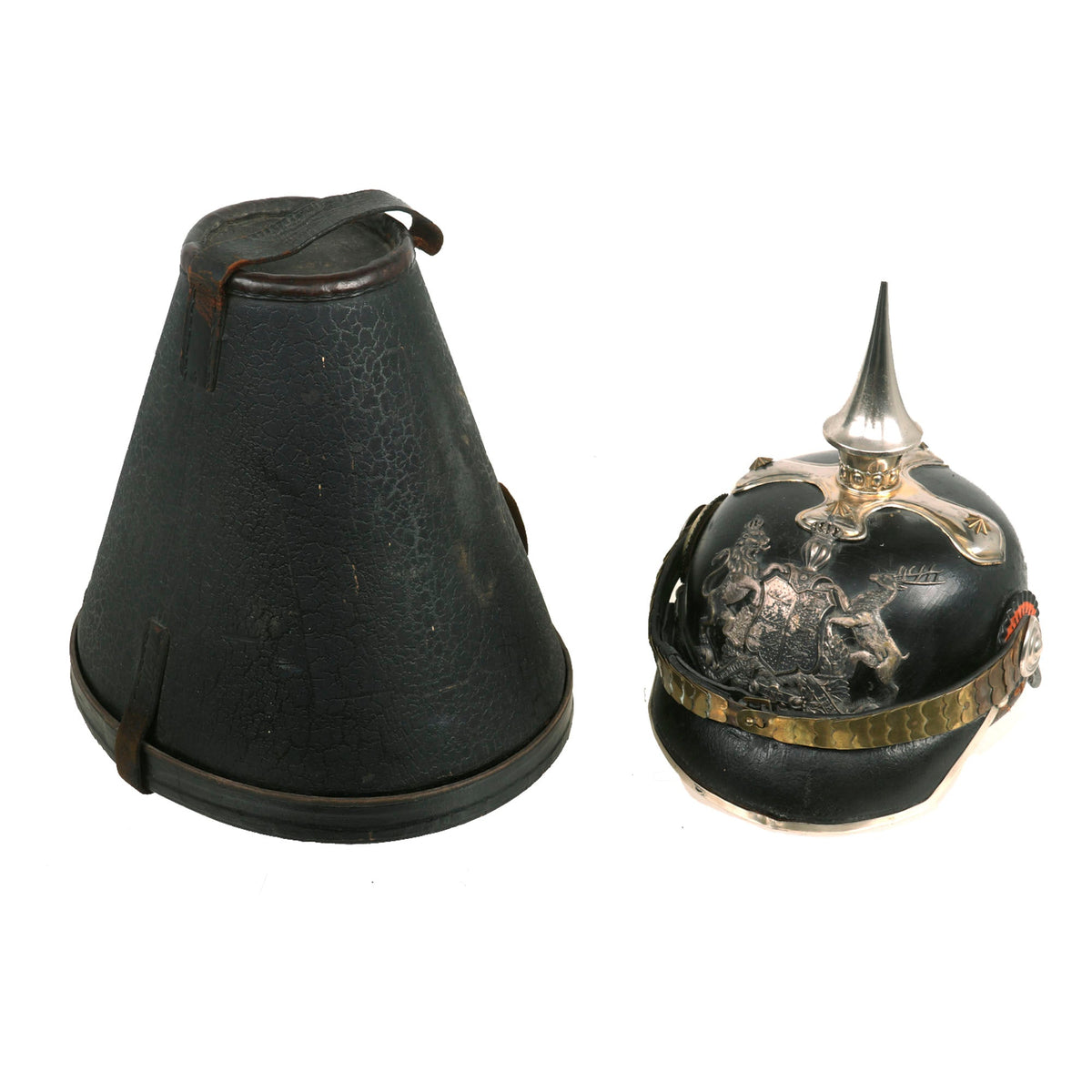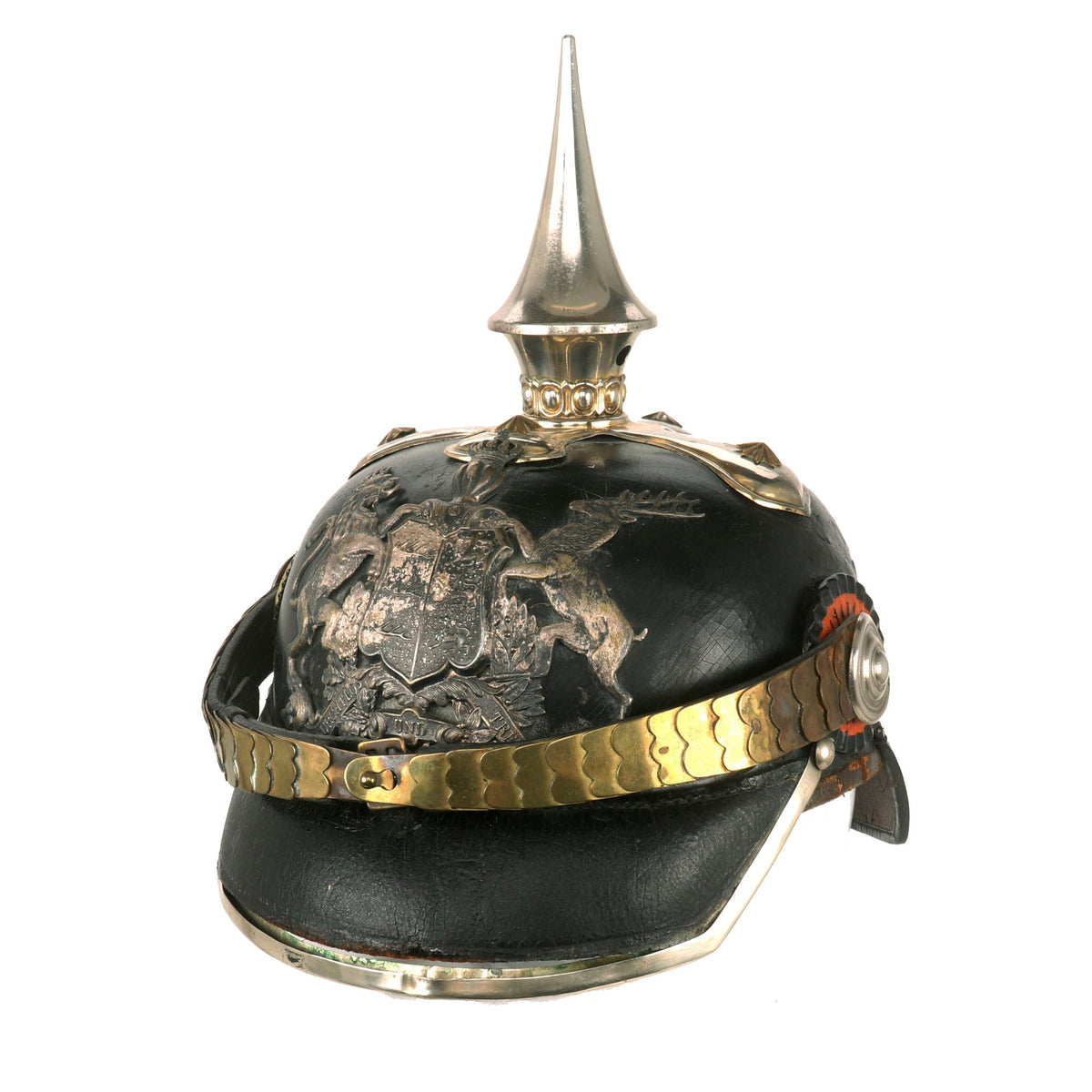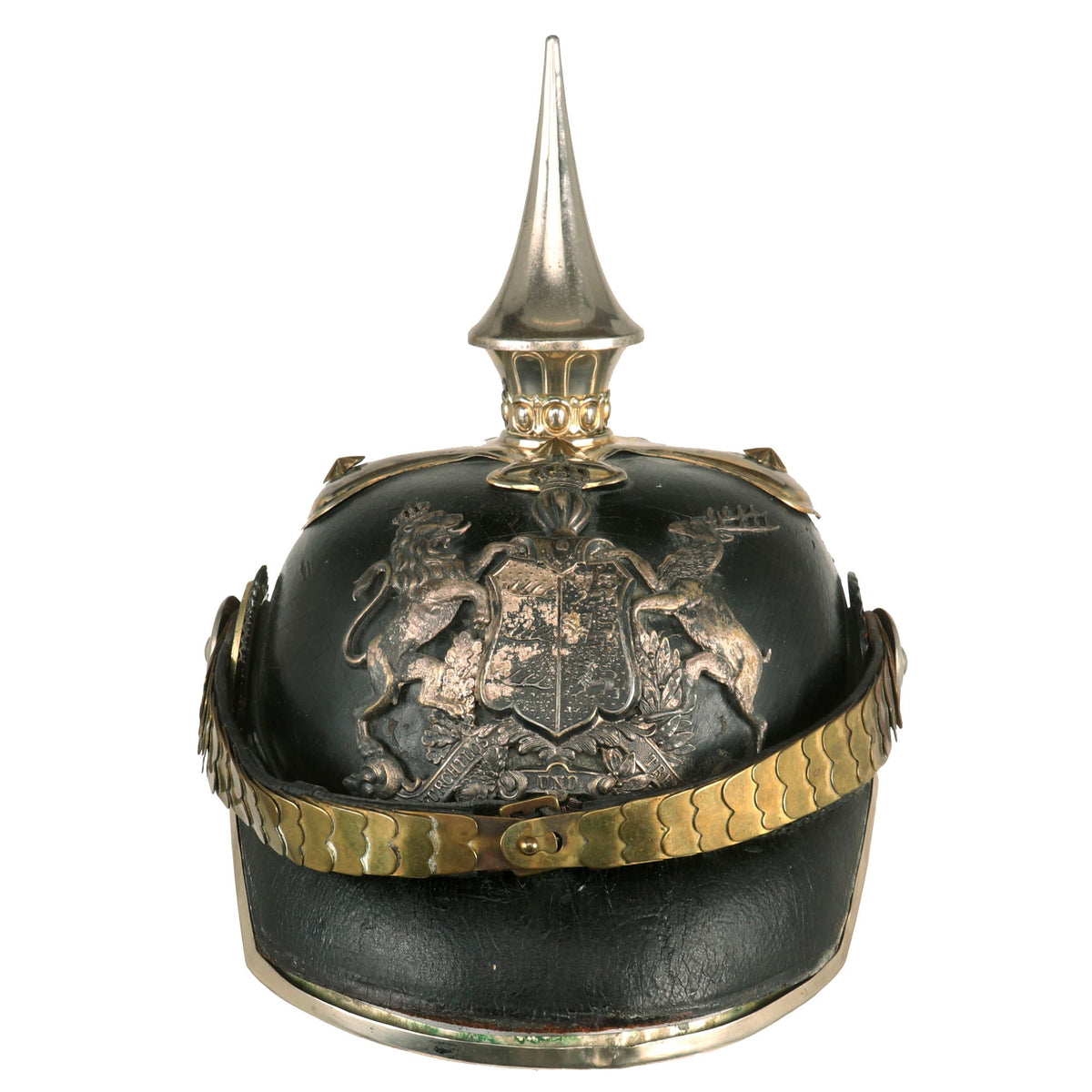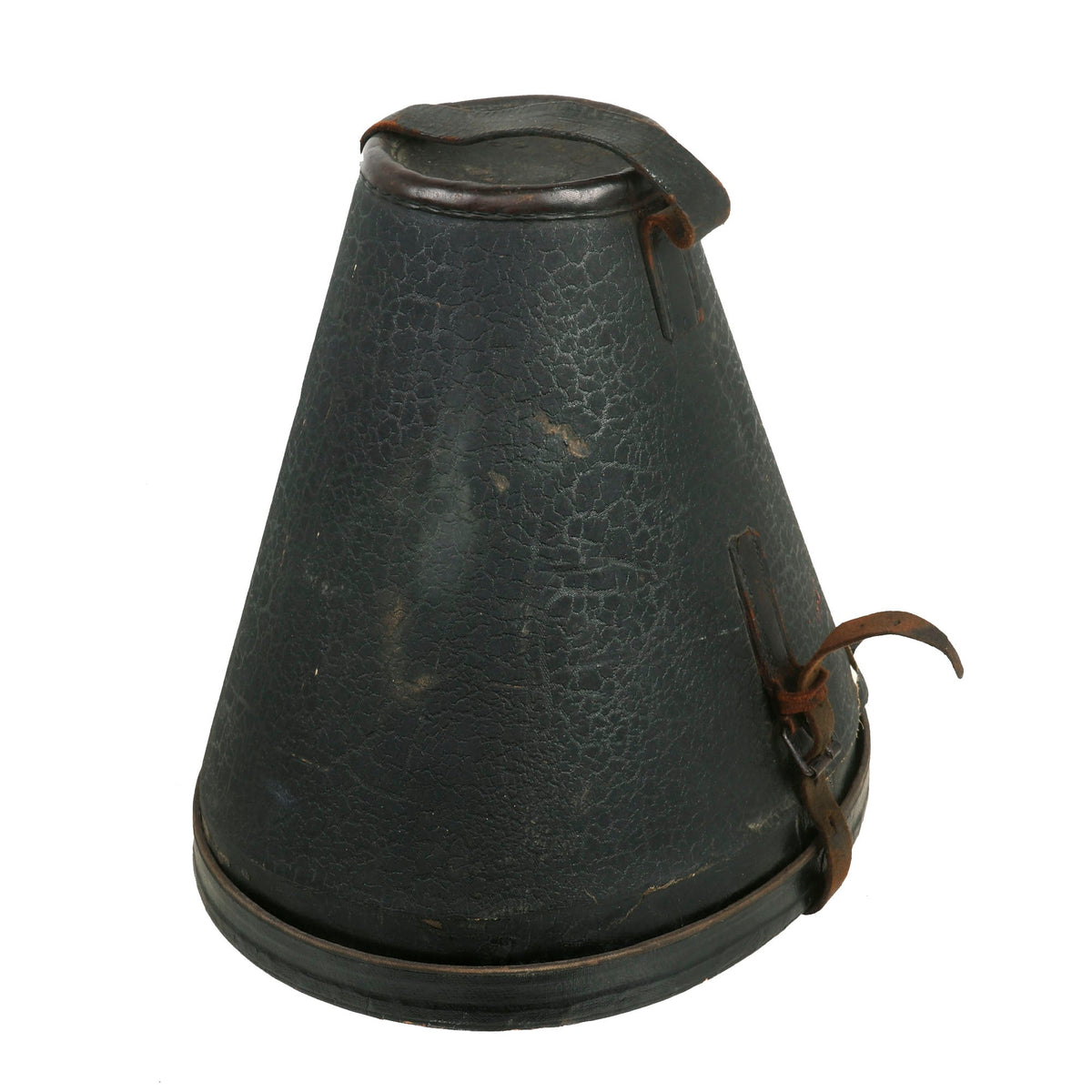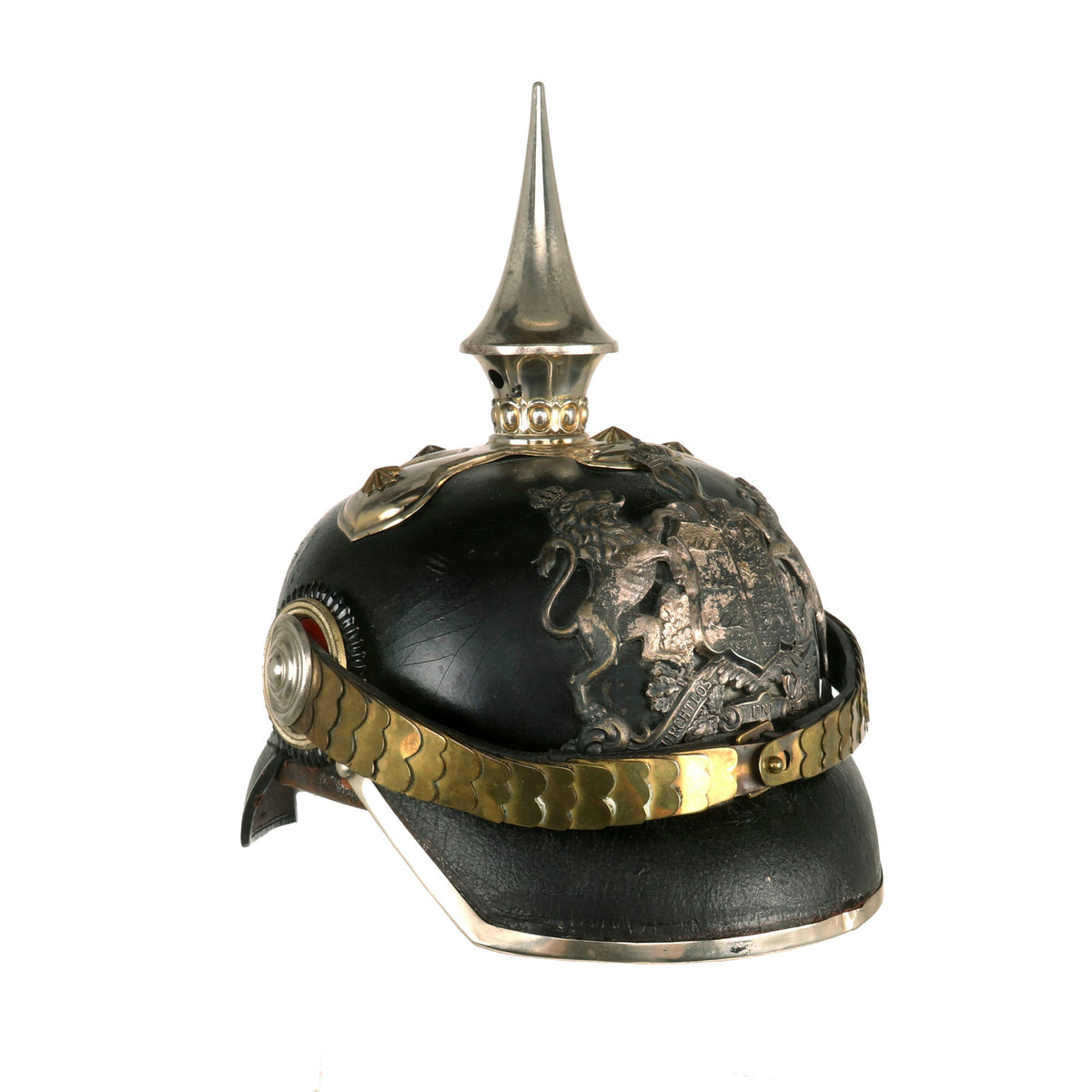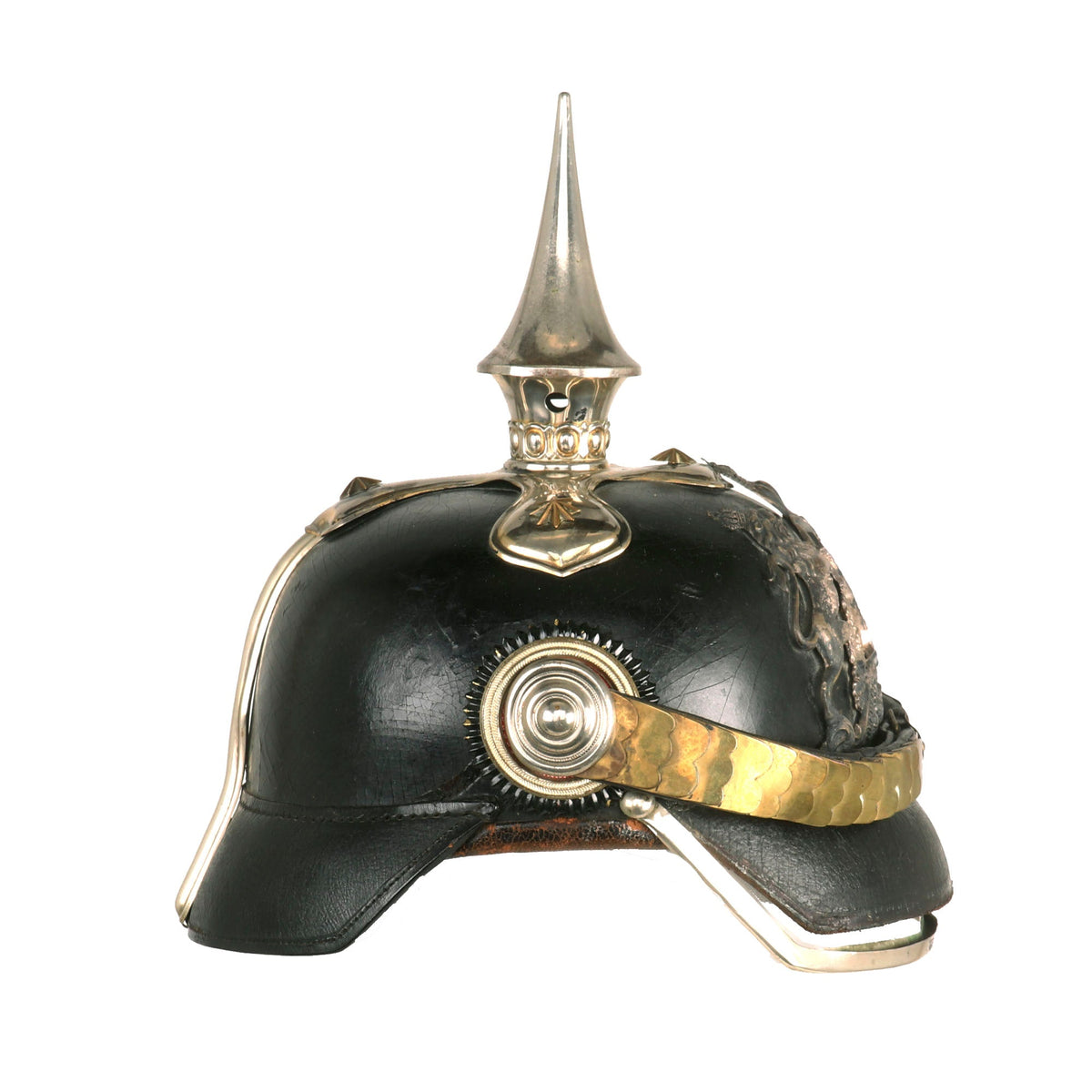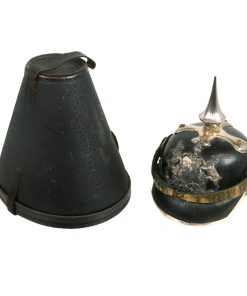Original German WWI Kingdom of Württemberg Dragoon Officer’s M1897 Pickelhaube With Case Original Items
$ 1.995,00 $ 498,75
Original Item: Only One Available. This is a good condition smart-looking, officer pickelhaube from a Württemberg Dragoner (Dragoon) Mounted Infantry Regiment officer, as indicated by the “Squared” front visor and Cruciform Spike support.
The Pickelhaube of commissioned officers holding a rank from Lieutenant to Colonel are all identical in features, but not quality. The quality of helmets within these ranks depended entirely on how much the individual wished to spend. A lowly Lieutenant’s helmet may be of much higher quality than one worn by a Colonel. As expected, officer helmets were of a much higher quality than the issued version and utilized the “squared finger” liners until 1880, when the internal leather sweatband and silk skull-cap came into use.
Regardless of the unit, officer Pickelhaube share common features such as: the undersides of visors are lined, Officer Kokarden are carried, and the “egg & dart” Perlring was matched with star-pattern spike base brads, and chin scales were worn. The officer’s Pickelhaube was basically unchanged from 1871 to 1899 when it had a more domed shape, and from 1899 to the end it had more of a skull shape. Otherwise, with the exception of the addition of the Reich’s Kokarde in 1897, the officer’s Haube was mostly the same from 1871 to 1918.
As with most pickelhaube, they are made from boiled leather, which is then lacquered black. The overall condition of this officer’s pickelhaube is very good. Almost all of the helmet’s furniture is highly-detailed silvered alloy.
The front wappen features the Coat of Arms of Württemberg, with a shield in the center showing three antlers that represent Württemberg on the left side, and the three lions of medieval Swabia on the right side. There is a wreath surrounding it made of Laurels on the right and Oak Leaves on the left. The Crowned Lion of Swabia supports the shield to the left, and the Stag of Württemberg supports it on the right. On a banner at the bottom is the motto of the kingdom: FURCHTLOS UND TREW (“Fearless and loyal”). The wappen is held in place by the standard square nut and bolt system.
It is complete with the German National Colors (red white and black) Kokarden (cockades) around the right chin strap lug and a Württemberg kokarden present on the left. In 1897 the new Reichs-Kokarde in Red-White-Black was introduced for all ranks to commemorate the 100th anniversary of the birth of Kaiser Wilhelm 1st. The Reichs-Kokarde was to be worn on the right side of the helmet, and the state Kokarde was moved to the left, as on this helmet. The Attached chin strap is complete and mostly solid with just a few areas of questionable integrity.
The helmet’s interior reveals no depot marks on the back visor. It is approximately a size 7 1/8 US (57cm). The lacquer finished leather is in great condition having no serious issues, just the usual light cracking in areas. The shape of this pickelhaube is unfortunately slightly sunken in, probably due to long term weight on the spike, something that we see quite often. There is also definitely some level of leather shrinkage due to age, which is why some fittings are somewhat loose.
The inside liner is still present, but “simplified” and definitely shows wear. The leather portion of the liner is nice and supple, with some staining and staining and tearing on the skull cap.
The storage case is complete and still mostly solid. There is the usual wear present as well as crazing. Unfortunately there is some tearing that was taped over (why?) and the leather strap is in delicate condition.
Overall a very appealing Model 1897 Dragoon Pickelhaube helmet, ready to display!
The Kingdom of Württemberg was a German state that existed from 1805 to 1918, located within the area that is now Baden-Württemberg. The kingdom was a continuation of the Duchy of Württemberg, which existed from 1495 to 1805. Prior to 1495, Württemberg was a county in the former Duchy of Swabia, which had dissolved after the death of Duke Conradin in 1268.
The kingdom had borders with Bavaria on the east and south, with Baden in the north, west, and south. The southern part surrounded the Prussian province of Hohenzollern on most of its sides and touched on Lake Constance.
Fast Shipping with Professional Packaging
Thanks to our longstanding association with UPS FedEx DHL, and other major international carriers, we are able to provide a range of shipping options. Our warehouse staff is expertly trained and will wrap your products according to our exact and precise specifications. Prior to shipping, your goods will be thoroughly examined and securely secured. We ship to thousands clients each day across multiple countries. This shows how we're dedicated to be the largest retailer on the internet. Warehouses and distribution centres can be located throughout Europe as well as the USA.
Note: Orders with more than one item will be assigned a processing date depending on the item.
Before shipping before shipping, we'll conduct a thorough inspection of the items you have ordered. Today, the majority of orders will be delivered within 48 hours. The delivery time will be between 3-7 days.
Returns
The stock is dynamic and we cannot completely manage it because multiple stakeholders are involved, including our factory and warehouse. So the actual stock may alter at any time. It's possible that you may not receive your order once the order has been made.
Our policy is valid for a period of 30 days. If you don't receive the product within 30 days, we are not able to issue a refund or an exchange.
You can only return an item if it is unused and in the same state as the day you received it. You must have the item in its original packaging.
Related products
Uncategorized
Angolan Rebel 1970s era 60mm Inert Display Mortar from Angolan Civil War Original Items
Uncategorized
Uncategorized
Uncategorized
Uncategorized
Uncategorized
Uncategorized
Uncategorized
Armoured Fighting Vehicles of the World: AFVs of World War One (Hardcover Book) New Made Items
Uncategorized
Uncategorized
Uncategorized
Uncategorized
Uncategorized
Uncategorized
Uncategorized
